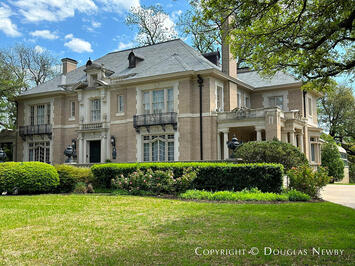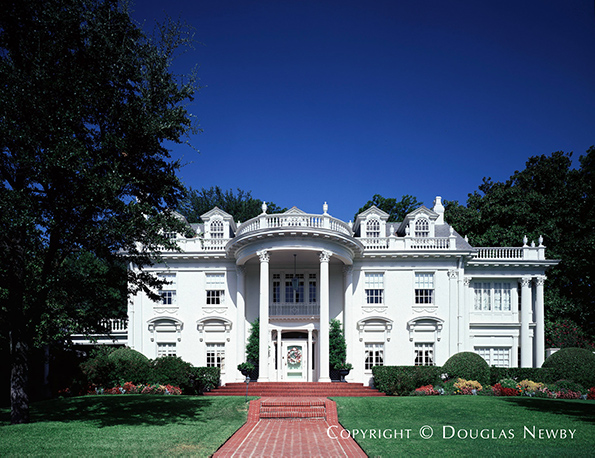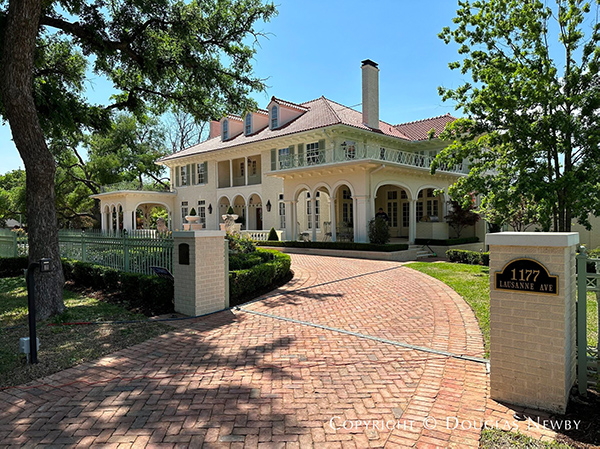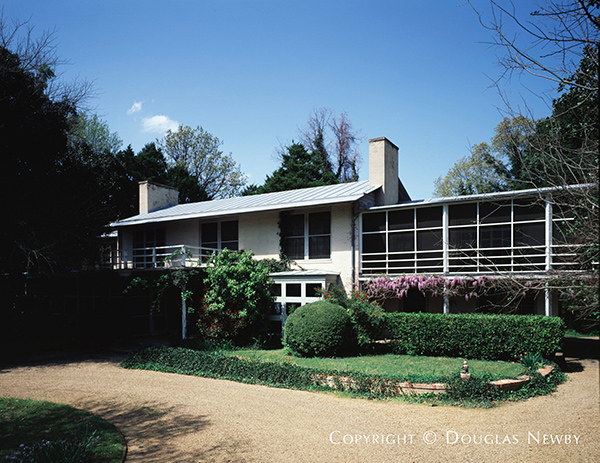
Cities evolve by either expanding, deteriorating, tearing down or preserving. Some cities like Dallas have vast vacant land and other cities have little undeveloped land. Whether a city is expanding or declining, preservation is always healthy for a city.
New Housing is Often Like Fast Fashion
Often, new construction tends to like fast fashion – seldom inexpensive but never long-lasting. New apartments come to mind. Apartments cost more to build than single-family homes per square foot, but they do not contribute to community building or lasting strength and continuity of the city. Even the monotony of some new single-family homes can make a neighborhood faded and less desirable in 15 or 20 years, contributing to a long-term decline. Preservation of existing homes moderates the sameness of large swathes of du jour development.
Cities Are Fragile
Cities are fragile. Think Detroit in the 1950s, St. Louis in the 1890s, Los Angeles in the second half of the 20th century, San Francisco until now. At one time they were the strongest cities in the country with the most urban momentum. Now, Detroit and St. Louis are shells of their former selves, and Los Angeles and San Francisco are rapidly declining. Even in Dallas, Munger Place, in 1907 the finest Dallas neighborhood, by 1977 was identified as the worst neighborhood in the city.
Preservation Helps Keep a City Healthy
Dallas is not known for preservation, but it has been a major contributor to Dallas arguably becoming the most successful 21st century city in America. In the 1970s, Munger Place and the surrounding 100 blocks of rental properties began recover when they were rezoned from multifamily to single-family zoning. This preservation effort generated a billion dollars of renovation and appreciation over the next 45 years.
Preservation Organizations are Notoriously Ineffective at Saving Significant Homes

This architecturally significant home designed by architect Hal Thomson is a good example. If this magnificent home cannot be saved, what home can be saved?
Preservation organizations are notoriously inefficient at saving an individual architecturally significant home and historically significant home like this one in Highland Park. Bringing attention to a home’s pending demise when bulldozers are sitting on the front lawn is too late. Simmering and self-indulgent outrage does not save homes. Just the opposite.
Preservation Groups Accelerate the Loss of Architecturally Significant Homes
Preservation groups arriving at the midnight hour are basically advertising that no one in the world wants even the grandest, finest, most admired historic homes. If the public is convinced no one would want even a spectacular home, why would they want to risk buying just a good historic home. And when has a preservation group’s outcry ever shamed a new property owner into not tearing down a house for the lot they purchased? If we know these belated preservation efforts don’t work, why do preservation groups focus on the failure to preserve a home rather than helping find a buyer early on in the process to preserve a home?
I have written about preemptive ways to save significant homes in a series, Five Preservation Steps to Saving Historic and Architecturally Significant Homes, however, thousands of homes in Dallas have been saved and can be saved in the future by just bringing attention to Dallas neighborhoods and their architecture.
Preservation Dallas 50th Anniversary Home Tour Showcases 50 Years of Preservationists Bringing Attention to Neighborhoods and Architecture
The Preservation Dallas 50th Anniversary Home Tour shows examples of broad preservation efforts that were successful. The first Preservation Dallas (formerly known as the Historic Preservation League) Tour took place on Swiss Avenue. It brought thousands of people to the street to see examples of these 100 mansions that had fallen out of favor that were designed by the same architects that designed the best homes in Highland Park. Rather than high-rises and apartments being built on large Swiss Avenue lots, Swiss Avenue instead became the first Dallas Historic District. This is an example of how it is easier to save 100 rather than just one architecturally significant home. Here are examples of homes on the 50th Anniversary Home Tour and how they contribute to the understanding of Dallas neighborhoods and Dallas architecture.
1177 Lausanne Avenue Projects the Merit of Kessler Park, Oak Cliff, and Dallas Architecture

This Italian Renaissance style home at 1177 Lausanne Avenue is the jewel of the Kessler Park neighborhood, the crown of Oak Cliff.
The Italian Renaissance style home at 1177 Lausanne Avenue in Kessler Park reminds us of three Dallas preservation efforts that promoted Dallas preservation rather than focusing on just one house.
The good news is there is new interest in historic Dallas homes of all styles and ages.
Junius Heights Home at 5612 Reiger Avenue Shows National Success of 100-Block Single Family Rezoning
The Craftsman bungalow at 5612 Reiger Avenue is a modest home in a neighborhood of Craftsman bungalows. And yet, when magnificent and iconic historic homes are being torn down, this Craftsman bungalow survived along with the other 2,000 Craftsman bungalows and Prairie Style homes that reside in the single-family historic districts of this 100-block area.
FNMA chose the boundaries of this single-family rezoned area made of absentee-owned rental properties for their first inner-city lending program. Here is another example of it being easier to save 2,000 historic homes than one historic home.
3201 Wendover Road is Example of Someone Placing Deed Restrictions on a Home to Preserve It

Architect O’Neil Ford and architect Arch Swank designed this home protected by deed restrictions placed on the property by the seller.
This Texas Modern home designed by architect O’Neil Ford and architect Arch Swank is a beautiful example of the family of the original owners placing protective deed restrictions on a home before they sold it. I recall attorney Alan Bromberg and his wife inviting me over to this modern home that his parents built and asking me what I thought was the best way to preserve it. I explained that I had worked with many families in the past who placed protective deed restrictions on a property prior to a sale. Alan Bromberg, an SMU law professor, expanded this idea with even more extensive protective deed restrictions that were readily accepted by the current owner.
Architect Frank Welch Designed Texas Modern Home 3535 West Lawther Drive
This Texas Modern home is not historic, but it promotes preservation because it is an homage to the historic homes at 3201 Wendover Road designed by O’Neil Ford and Arch Swank, and the Texas Modern home designed by David Williams at 3805 McFarlin in University Park. Frank Welch was trained by O’Neil Ford, who was trained by David Williams, who created the Texas Modern style of architecture and were the leading architects designing Dallas modern homes.
Established Homes and Neighborhoods are Nutrients for a City
Existing homes and neighborhoods in any condition are nutrients for a city. Building on the legacy of a neighborhood creates a stronger legacy. A winning culture creates more victories. Knowing a neighborhoods and home’s history generates pride and sentiment. It is much harder to root for transience. Older housing provides homes of different sizes and conditions, allowing progressive opportunities to reflect one’s station in life.
Now is the Time to Double Down on Promoting Neighborhoods and Good Architecture
Highlighting high-profile homeowners who have renovated an architecturally significant home, discussing the importance of architecture and promoting the joy that historic homes of any era or style brings homeowners encourage the success of preservation. Showcasing the desirability of older tree-lined Highland Park and Dallas neighborhoods increased the odds that the older homes in the neighborhood will be renovated. The Preservation Dallas 50th Anniversary Home Tour is an example of bringing awareness to preservation that makes a positive difference.
Douglas Newby is a national award-wining real estate broker who writes about real estate, cities, architecture and Organic Urbansim. He gave the TEDx Talk Homes That Make Us Happy. You can read more about him and his work on his website Architecturally SignificantHomes: DougNewby.com and on his blog DouglasNewby.com.
Lead photo: The Aldredge House designed by architect Hal Thomson at 5500 Swiss Avenue served as a neighborhood beacon for Munger Place and Swiss Avenue. All photos by author.












